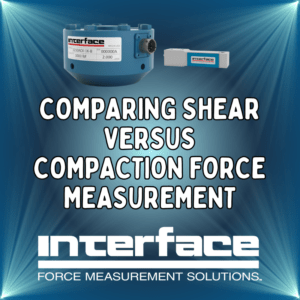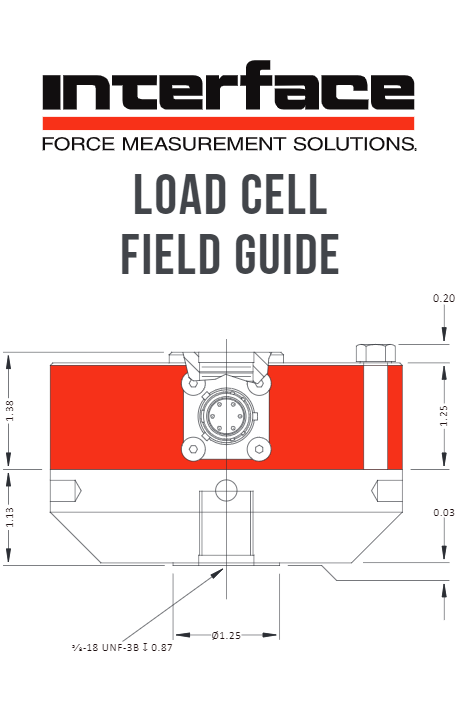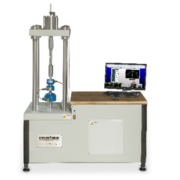Comparing Shear Versus Compaction Force Measurement
 Force measurement requires precise and reliable methods to ensure reliable results and accurate data. Two different methods of force measurement are shear and compaction. Shear force acts parallel to the surface, while compact force acts perpendicularly.
Force measurement requires precise and reliable methods to ensure reliable results and accurate data. Two different methods of force measurement are shear and compaction. Shear force acts parallel to the surface, while compact force acts perpendicularly.
Understanding the differences between shear and compaction is determinative, as it directly impacts applications, sensor choices, and output data for testing analysis. This knowledge aids in making informed test and measurement decisions in material science, mechanical engineering, and industrial automation.
Understanding Shear Force Measurement
Shear is a method that precisely measures the force acting parallel to a surface, causing it to deform or slide. Using a load cell, the measurement is obtained from the deformation of the shear beam under load, which is then translated into an electrical signal by strain gages.
- Load Cell Design and Structure: Shear beams are rectangular and designed to measure force through shear deformation. Interface shear beam load cells have a large hole bored partially through either side, leaving nothing but a thin, vertical web in the center of the cell. This differs from a bending beam cell, where the large hole in a bending beam passes through. Because shear force is cross-sectional, shear beam load cells offer top-notch stability for lateral forces. They are often used in configurations where the load is applied parallel to the beam axis.
- Sensitivity and Accuracy: Interface shear beams are known for their high sensitivity and accuracy. They are highly accurate for precise measurement with minimal interference from external forces. They are less affected by extraneous forces, such as bending moments and friction, making them ideal for applications requiring quality measurements.
- Use Cases: Interface shear beam load cells are robust, dependable, and designed to withstand continuous use and varying industrial environments. This reliability makes them popular across industries, from medical devices to industrial automation machinery. They are particularly suitable for applications that require robust and accurate force measurement, such as weighing systems, industrial scales, and machinery. Typical shear applications include measuring friction, analyzing material strength, and testing adhesive bonds.
Top Three Interface Shear Force Measurement Load Cells
- Interface’s most popular shear beam load cell, our Sealed Shear Load Beam Mini SSB, is a highly accurate shear beam-type load cell for general-purpose applications in capacities ranging from 50 to 10,000 lbf (222.4 N to 44.48 kN).
- The Interface Miniature Beam Load Cell MB is a versatile and durable shear beam measurement sensor used in medical test machines and various low-capacity applications. Performance on this product is +/- 0.03% FS, and available capacities are 5 to 250 lbf (22.2 N to 1.11 kN).
- Our Overload Protected Miniature Beam Load Cell MBI is fatigue-rated and offers better resistance to off-axis loads than similar load cells. This product has capacities from 2 to 10 lbf (10 to 50 N).
Examples of Shear Force Measurement Applications
Material Testing: Determining the shear strength of adhesives, bonding agents, or materials is crucial in various industries. Interface load cells can precisely measure the force required to cause shear failure, providing valuable product development and quality control data. Read Interface Solutions for Material Testing Engineers.
Friction Measurement: Understanding frictional forces is essential in many applications, such as automotive braking systems, manufacturing processes, and robotics. Interface load cells can measure the shear force generated between surfaces, aiding in optimizing friction-related parameters. Visit Friction Testing.
Understanding Compaction Force Measurement
Compact force, often called compressive force, measures the force pushing objects together. Compaction in force measurement refers to using compressive forces to measure load. This method is typically employed in load cells designed to measure the deformation of an object under compression.
- Load Cell Design and Structure: Compaction load cells often use column or pancake designs to measure compressive forces. Strain gages translate the material deformation under load into an electrical signal. Interface’s LowProfile designs are the world’s top-selling compaction force measurement load cells. They can be used in various configurations, including tension and compression, providing flexibility in different testing and measurement scenarios.
- Sensitivity and Accuracy: Interface compaction load cells are highly accurate as they are inherently designed to manage errors from misalignment and off-axis loading. Compaction load cells can handle high-capacity loads, making them suitable for applications involving substantial compressive forces.
- Use Cases: Load cells for compaction testing are commonly used in applications where compressive forces are predominant, such as material testing, structural testing, heavy-duty industrial weighing, manufacturing press operations, and failure testing. The Interface load cells used for compaction testing are used in aerospace, medical, energy, automotive, machine building, and industrial test labs.
Top Three Compaction Force Measurement Load Cells
- The 1200 Standard Precision LowProfile® Load Cell Series is Interface’s number one load cell for compaction force measurement. It is used in general-purpose compaction testing applications requiring a load cell compensated for eccentric loads. Interface load cells can measure as little as one pound (4.45N) to as much as two million pounds (9000kN) of force.
- Interface’s 1101 Compression-Only Ultra Precision LowProfile Load Cell has very low nonlinearity, hysteresis, and eccentric load compensation and a performance of 0.02%. It is available in compaction force measurement capacities of 1K lbf to 50K lbf (4.45 kN to 222 kN) and custom options with additional bridges and overload protection.
- Interface 1000 Fatigue-Rated Universal LowProfile Load Cells are designed with 300% safe overload, extremely low moment sensitivity of 0.1%/in, and a higher fatigue life. The range of compaction force measurement goes from one pound (4.45N) to one million pounds (4500kN) of force; interface load cells can do it. With many variants and configurations, our fatigue-rated load cells provide up to 100 million fully rendered cycles.
Examples of Compaction Force Measurement Applications
Fatigue Testing: Engineers and testing labs extensively use our pancake-style load cells to determine the compressive strength and deformation characteristics. By subjecting an object to a compressive load, engineers can evaluate its suitability for specific applications, assess its structural integrity, and optimize design properties. Interface load cells are used in testing the compressive strength of materials, components, and structures to define points of failure ultimately. This includes packaging, consumer products, construction, aerospace, and manufacturing applications. Go to Understanding the Anatomy of Fatigue Failure.
Weight Measurement: Interface load cells offer accurate and reliable weight measurements from industrial scales to laboratory balances. Their compact size and high precision make them suitable for various weighing applications, including transportation, infrastructure, food processing, packaging, and quality control. Review Interface Load Cells 401 Weighing and Advanced Testing Applications Guide.
Tech Talk Comparing Shear and Compaction Force Measurement
 The key difference between these two types of measurement is the direction of the force. The shear force acts parallel to the surface, while the compaction force acts perpendicularly. Interface outlines these two important methods in our Load Cell Field Guide. Here is an excerpt from the must-have technical reference, which is free to download.
The key difference between these two types of measurement is the direction of the force. The shear force acts parallel to the surface, while the compaction force acts perpendicularly. Interface outlines these two important methods in our Load Cell Field Guide. Here is an excerpt from the must-have technical reference, which is free to download.
In determining the shear strength versus compaction of soils or construction materials, the object is to determine the shear strength as the material is used at different underground depths or levels in constructing a high-rise building. Usually, a special test block is designed to test a particular type of material in conformance with a specification. The test block has a rectangular hole where the tested material is inserted.
To set up for the test, the shear block is placed in the test block so that the hole in the shear block lines up with the rectangular test hole. The material under test is then packed into the hole, up through the hole in the shear block, and almost to the top of the test block. Finally, the compaction piston is inserted, and the material is evenly pressed to fill the hole and remove air pockets and voids.
The actual test is performed in a test frame, much like a materials test machine, except that it has an additional capability to pull out the shear block while measuring the shear force and shear deflection. To perform the test, the compaction force is first applied on the top of the compaction piston by a compression load cell, and then the tension shear force is applied to the shear block by another load cell. The test is repeated for a range of compaction forces, and the output from the test is a table of figures or a graph of shear force versus compaction force.
Choosing between shear and compaction for force measurement depends on the application’s requirements. Shear excels in precision and resistance to extraneous forces, making it suitable for high-accuracy applications. On the other hand, compaction is preferred for high-capacity and versatile applications where compressive forces are predominant.
Understanding the strengths and limitations of each method will help you select the suitable load cell for your needs, ensuring reliable and accurate force measurement.
The Interface Load Cell Field Guide is an excellent resource for more detailed information on load cells and their applications. It provides in-depth insights into various load cell configurations and their performance characteristics, helping engineers and designers make informed decisions in force measurement.
Request a Quote from Interface, The World Leader in Force Measurement Solutions
Additional Resources
Test and Measurement Solutions
The Basics Of Shear And Bending Beams









